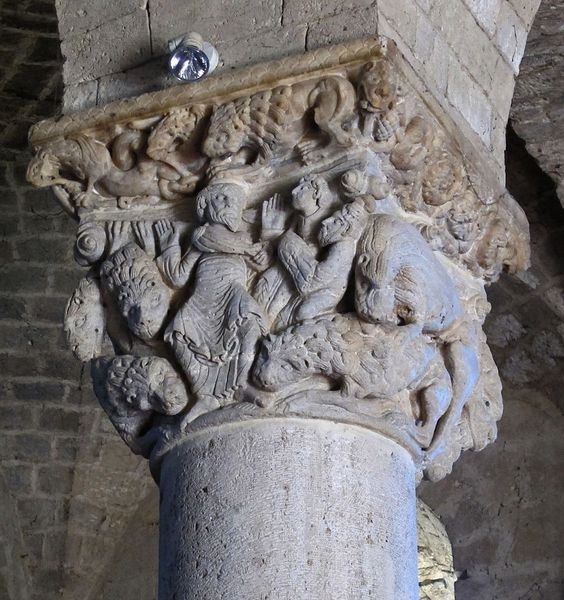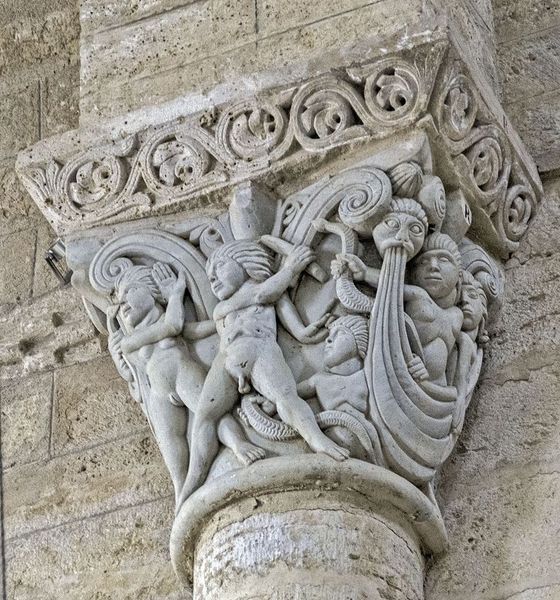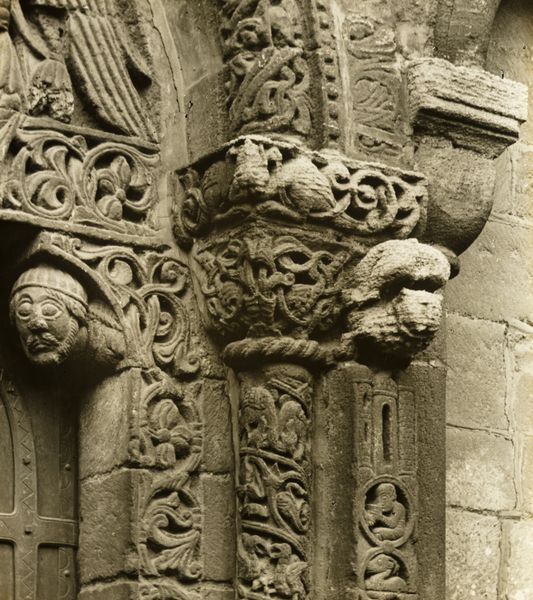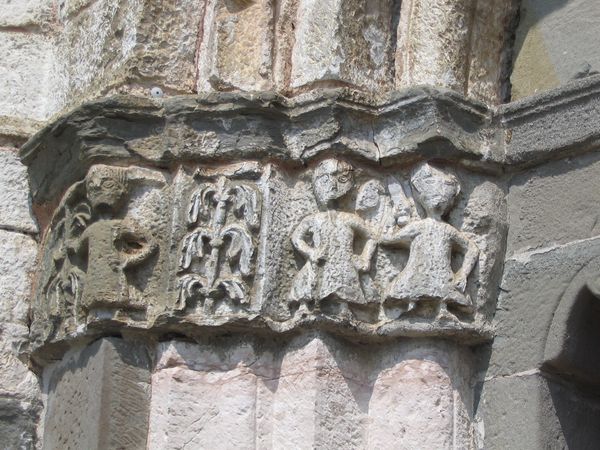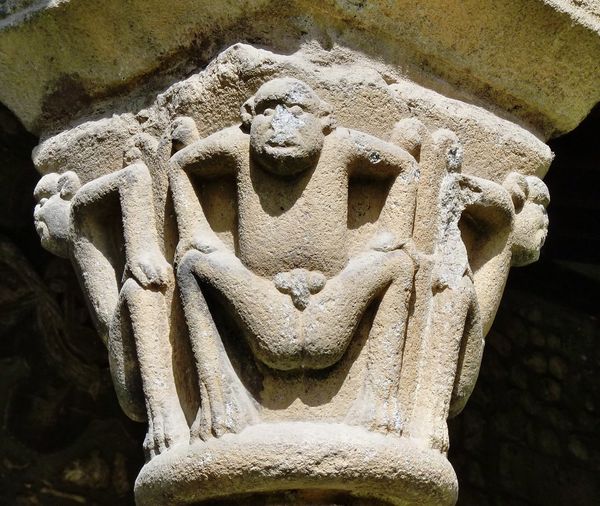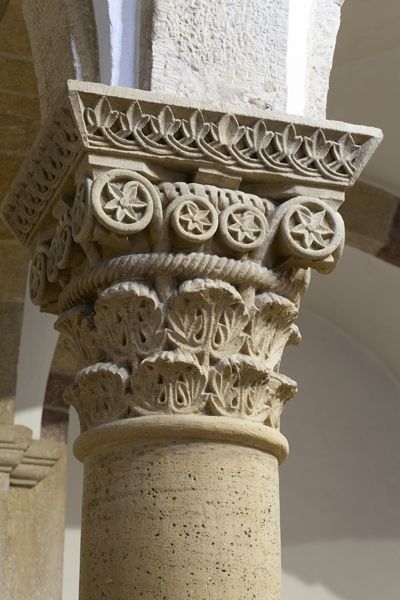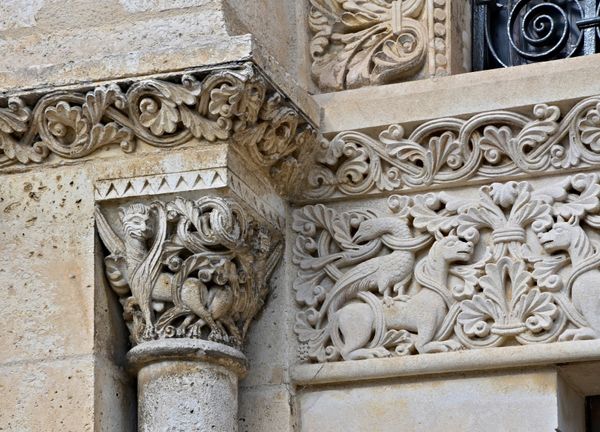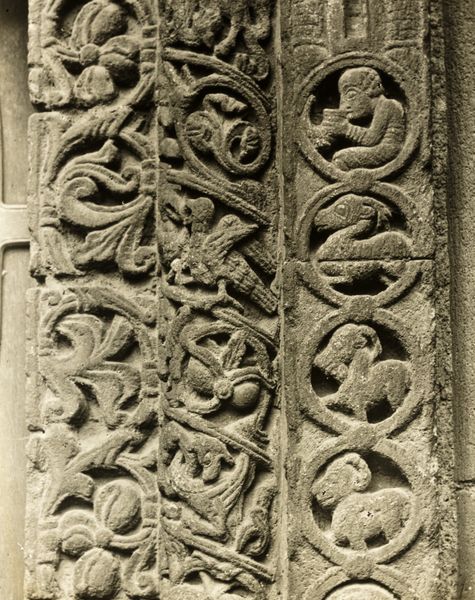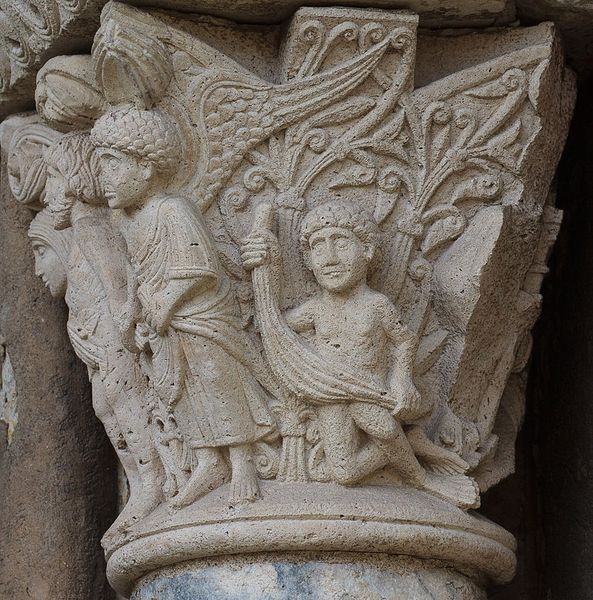
carving, sculpture, architecture
#
medieval
#
carving
#
sculpture
#
romanesque
#
geometric
#
sculpture
#
architecture
Copyright: Public domain
Editor: Here we have a Romanesque capital from Trier Cathedral in Germany, dating back to around 1200. Looking at the carved stone, I'm immediately drawn to the intricate geometric and organic forms. What do you see in this piece? Curator: From a formalist perspective, it is imperative to analyze the arrangement of forms and lines that create the overall composition. Note the layering – the stylized acanthus leaves at the bottom giving way to the geometric band above, capped by the swirling, almost abstract volutes at the very top. The artist uses a limited set of shapes, yet achieves remarkable complexity. What structural relationships strike you as significant? Editor: Well, the repetition of the leaf motif definitely creates a sense of rhythm and stability. But the shift to those almost unruly volutes at the top disrupts that. It prevents the carving from being too predictable. Curator: Precisely! It is this dynamic tension between order and deviation that gives the capital its visual interest. Observe, too, how the light plays across the sculpted surfaces. Notice the way the artist modulated depth to achieve distinct tonal contrasts and guide the viewer's eye, generating depth within the tight picture plane. The texture itself adds another layer of meaning. Editor: I never thought about texture as meaning before. Curator: It is not merely about the feel of the stone, but about the artist's intervention in shaping it. Do you feel you have understood something new about art after looking at the composition? Editor: Absolutely! Seeing how form and structure can create dynamic tension and meaning is a great insight. I’ll definitely look at architectural sculpture differently now, not just as ornamentation but as visual storytelling. Curator: Indeed. Focusing on the elements of the image, one appreciates the architectural structure, its geometry, texture and light. One is now able to understand how each plays a vital role in experiencing and understanding artwork.
Comments
No comments
Be the first to comment and join the conversation on the ultimate creative platform.
